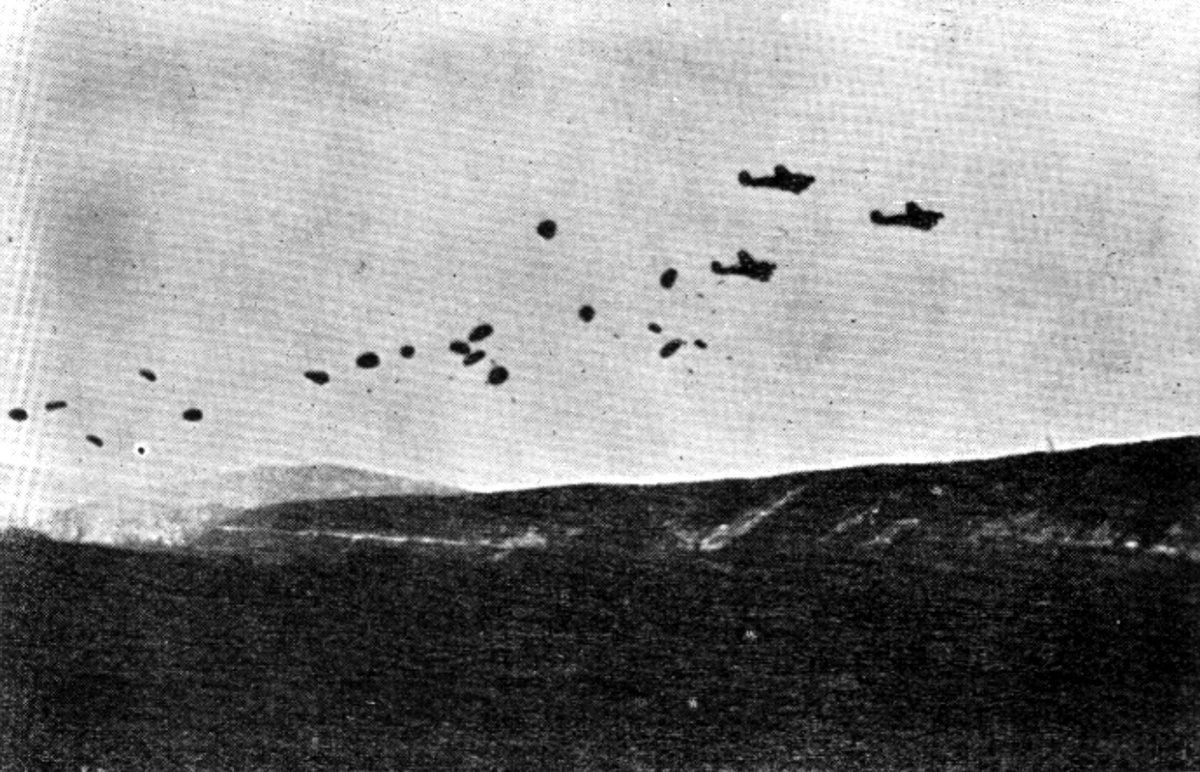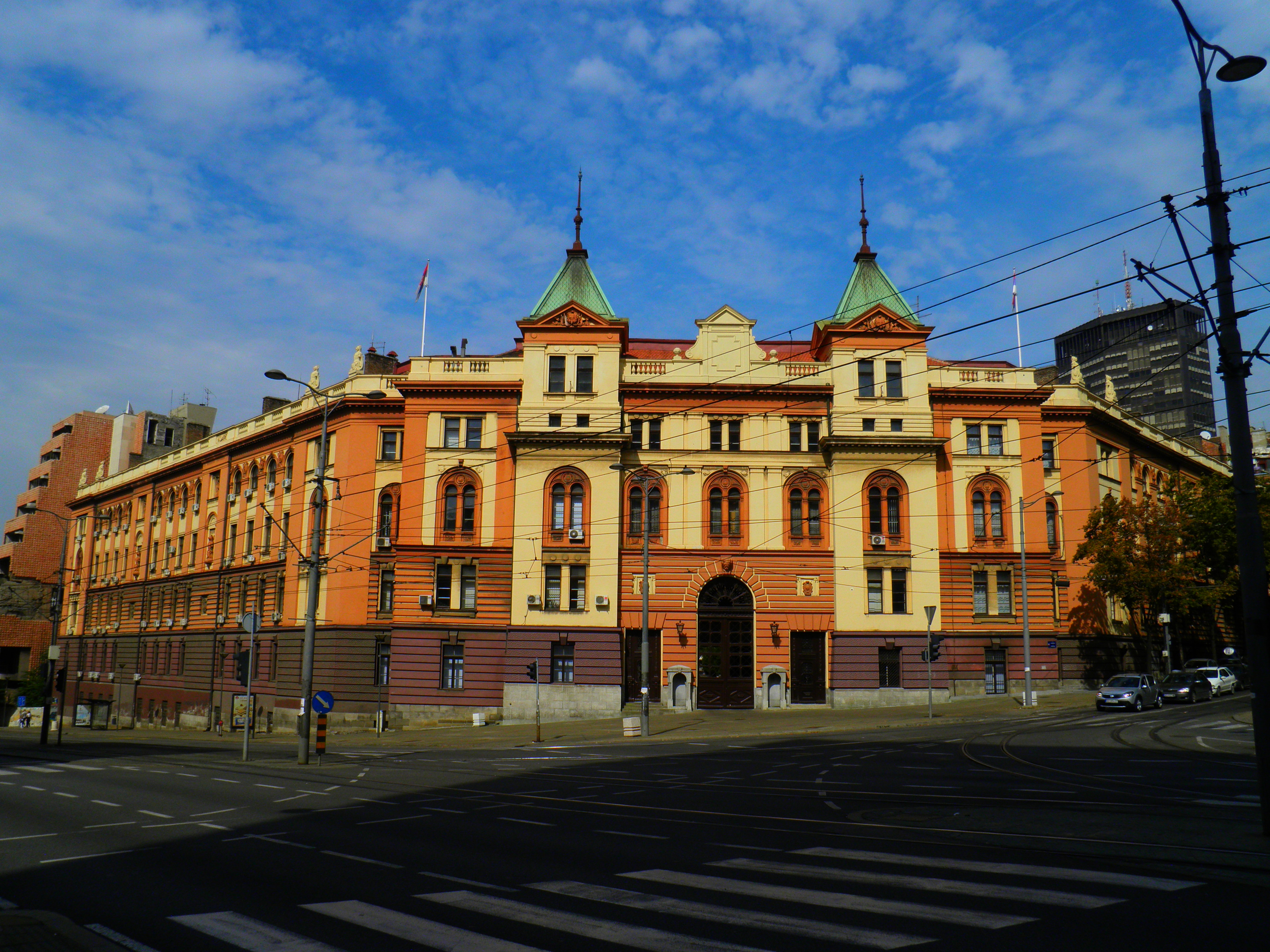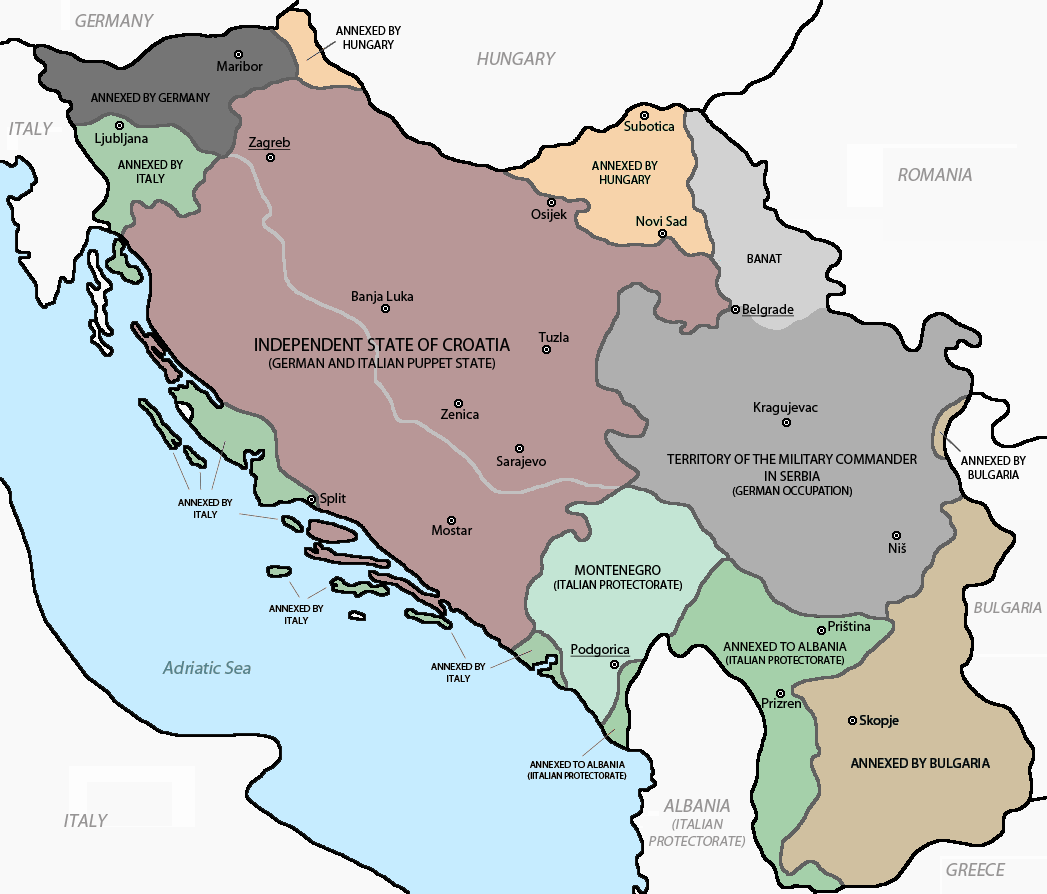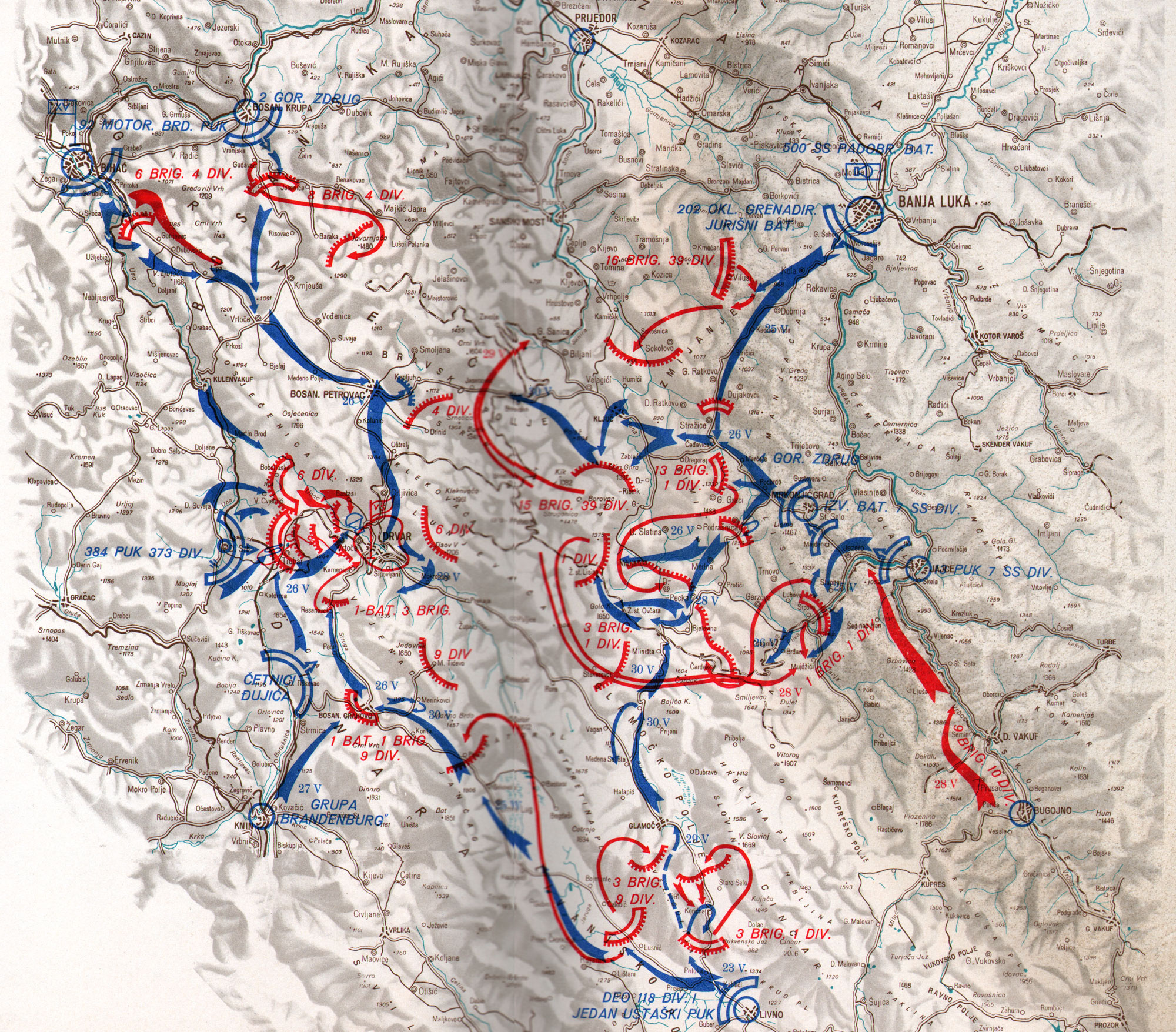|
6th Division (Yugoslav Partisans)
The 6th Proletarian Assault Lika Division "Nikola Tesla" () was a Yugoslav Partisan Division (military), division formed on 22 November 1942. It was formed from the 1st, 2nd, and 3rd Lika Brigades. On 11 November 1943, it became part of the 4th Corps (Yugoslav Partisans), 4th Corps and later a part of the 1st Corps (Yugoslav Partisans), 1st Corps. It operated in Dalmatia until November 1943 when it crossed into Bosnia (region), Bosnia, later it fought in Government of National Salvation, Serbia and on the Syrmian Front. From October 1944, the 22nd Serbian Kosmaj Brigade also fought as part of the division, and in December 1944 an Artillery Brigade was formed within the division. After its formation, it participated in the operations of the 3rd Corps (Yugoslav Partisans), 1st Bosnian Corps in the lower course of the Una (Sava), Una, and at the end of 1942 and early 1943 it carried out attacks on Kingdom of Italy, Italian, Ustaše and Chetniks, Chetnik garrisons in Lika and northern ... [...More Info...] [...Related Items...] OR: [Wikipedia] [Google] [Baidu] |
Democratic Federal Yugoslavia
Democratic Federal Yugoslavia, also known as Democratic Federative Yugoslavia (DF Yugoslavia or DFY), was a provisional state established during World War II on 29 November 1943 through the Second Session of the Anti-Fascist Council for the National Liberation of Yugoslavia (AVNOJ). The National Committee for the Liberation of Yugoslavia (NKOJ) was its original executive body. Throughout its existence it was governed by Marshal Josip Broz Tito as prime minister. It was recognized by the Allies at the Tehran Conference, along with the AVNOJ as its deliberative body. The Yugoslav government-in-exile of King Peter II in London, partly due to pressure from the United Kingdom,Walter R. Roberts. ''Tito, Mihailović, and the allies, 1941-1945''. Duke University Press, 1987. Pp. 288. recognized the AVNOJ government with the Treaty of Vis, signed on 16 June 1944 between the prime minister of the government-in-exile, Ivan Šubašić, and Tito. With the Treaty of Vis, the government-i ... [...More Info...] [...Related Items...] OR: [Wikipedia] [Google] [Baidu] |
Chetniks
The Chetniks,, ; formally the Chetnik Detachments of the Yugoslav Army, and also the Yugoslav Army in the Homeland; and informally colloquially the Ravna Gora Movement, was a Kingdom of Yugoslavia, Yugoslav royalist and Serbian nationalist movement and Guerrilla warfare, guerrilla force in Axis-occupied Yugoslavia. Although it was not a homogeneous movement, it was led by Draža Mihailović. While it was anti-Axis powers, Axis in its long-term goals and engaged in marginal resistance activities for limited periods, it also engaged in tactical or selective Collaborationism, collaboration with Axis forces for almost all of the war. The Chetnik movement adopted a policy of collaboration with regard to the Axis, and engaged in cooperation to one degree or another by both establishing a ''modus vivendi'' and operating as "legalised" auxiliary forces under Axis control. Over a period of time, and in different parts of the country, the movement was progressively drawn into collaborat ... [...More Info...] [...Related Items...] OR: [Wikipedia] [Google] [Baidu] |
Đakovo
Đakovo (; , , sr-Cyrl, Ђаково) is a town in the region of Slavonia, Croatia. Đakovo is the centre of the fertile and rich Đakovo region ( ). Etymology The etymology of the name is the (diákos) in Slavic form đak (pupil). The Hungarian ''diák'' word has the same Greek origin and it is uncertain whether the name came directly from Greek, Hungarian, or local Slavic form. History In Roman antiquity the settlement ''Certissia'' stood on the same spot until it disappeared during the Migration Period. The settlement's first mention in historical documents dates from 1239 when Béla IV of Hungary granted it to the Diocese of Bosnia (), and the Bishop moved his seat here in 1246. The predecessor to the newer St. Peter's Cathedral was built in 1355. In 1374 the settlement is documented under the name ''Dyacou''. Croatian rebels in 1386 on 25 July captured Queen Mary of Hungary and her mother Elizabeth near the settlement. The Ottoman rule over Đakovo started in 1536 ... [...More Info...] [...Related Items...] OR: [Wikipedia] [Google] [Baidu] |
Zemun
Zemun ( sr-cyrl, Земун, ; ) is a Subdivisions of Belgrade, municipality in the city of Belgrade, Serbia. Zemun was a separate town that was absorbed into Belgrade in 1934. It lies on the right bank of the Danube river, upstream from downtown Belgrade. The development of New Belgrade in the late 20th century expanded the continuous urban area of Belgrade and merged it with Zemun. The town was conquered by the Kingdom of Hungary in the 12th century and in the 15th century it was given as a personal possession to the Serbian Despotate, Serbian despot Đurađ Branković. After the Serbian Despotate fell to the Ottoman Empire in 1459, Zemun became an important military outpost. Its strategic location near the confluence of the Sava and the Danube placed it in the center of the continued border wars between the Habsburg Empire, Habsburg and the Ottoman empires. The Treaty of Passarowitz of 1718 finally placed the town into Habsburg possession, the Military Frontier was organized in ... [...More Info...] [...Related Items...] OR: [Wikipedia] [Google] [Baidu] |
Nemanjina Street
Nemanjina Street () is a very important thoroughfare in downtown Belgrade, Serbia, in the Savski Venac municipality. After the completion of the construction of the Railway station in 1884, it became one of the city's main infrastructure links, a "location where traffic arteries of the capital intersect". The street got its name in 1896, when it was named after a Serbian ruler from the 12th century, Stefan Nemanja. Location The street stretches from the Slavija (Belgrade), Slavija Square, downhill to the Savamala neighborhood. It passes through the neighborhood of West Vračar, next to the parks of Manjež and Park Gavrilo Princip and numerous administrative buildings including the government, ministries, army headquarters and hospitals. On the lower end it finishes at the Belgrade Main railway station. It crosses several other important city streets, like Kneza Miloša Street and Balkanska Street. History Originally, direction of the future street, due to its steepness, ... [...More Info...] [...Related Items...] OR: [Wikipedia] [Google] [Baidu] |
Valjevo
Valjevo (Serbian Cyrillic: Ваљево, ) is a List of cities in Serbia, city and the administrative center of the Kolubara District in western Serbia. According to the 2022 census, the city itself has a population of 56,145 while the city administrative area has 82,169 inhabitants. The city is situated along the river Kolubara. History In the nearby village of Petnica, scientists found the first complete neolithic habitat in Serbia and dated it at 6,000 years old. In Ancient Rome, Roman times this area was part of the province of Moesia. Valjevo was mentioned for the first time in 1393. It was an important staging post on the trade route that connected Bosnia to Belgrade. Valjevo became significant during the 16th and 17th centuries under stable Ottoman Empire, Ottoman rule. According to Matija Nenadović, there were 24 mosques in Valjevo in the late 18th century. At the beginning of the 19th century most of the territory of Serbia rapidly transformed. The Serbian revolution ... [...More Info...] [...Related Items...] OR: [Wikipedia] [Google] [Baidu] |
Territory Of The Military Commander In Serbia
The Territory of the Military Commander in Serbia (; ) was the area of the Kingdom of Yugoslavia that was placed under a military government of occupation by the Wehrmacht following the invasion, occupation and dismantling of Yugoslavia in April 1941. The territory included only most of modern central Serbia, with the addition of the northern part of Kosovo (around Kosovska Mitrovica), and the Banat. This territory was the only area of partitioned Yugoslavia in which the German occupants established a military government. This was due to the key rail and the Danube transport routes that passed through it, and its valuable resources, particularly non-ferrous metals. On 22 April 1941, the territory was placed under the supreme authority of the German military commander in Serbia, with the day-to-day administration of the territory under the control of the chief of the military administration staff. The lines of command and control in the occupied territory were never unified, ... [...More Info...] [...Related Items...] OR: [Wikipedia] [Google] [Baidu] |
1st Division (Yugoslav Partisans)
The First Proletarian Division of the NOVJ was formed on November 1, 1942 from the 1st Proletarian Brigade (Yugoslav Partisans), First Proletarian Brigade, the Third Proletarian Brigade and the Third Krajina Brigade in Bosanski Petrovac, under command of Koča Popović. It was considered one of the elite units of the NOVJ. The combat path of the First Proletarian Division After its establishment, it undertook operations in central Bosnia. From November 19 to December 4, 1942, it destroyed the garrisons in Sitnica, Čađavica, Mrkonjić Grad, Jajce (in cooperation with the 3rd Division (Yugoslav Partisans), 3rd Division), Skender Vakuf and Kotor Varoš. During January 1943, it captured Teslić and Prnjavor, Bosnia and Herzegovina, Prnjavor. During the Case White, Battle of the Neretva in the Neretva delta, it represented the left attack column, and took part in the counterattack near Gornji Vakuf and the fighting against the Chetniks near Nevesinje and Kalinovik. Durin ... [...More Info...] [...Related Items...] OR: [Wikipedia] [Google] [Baidu] |
Supreme Headquarters (Yugoslav Partisans)
The Supreme Headquarters was created in June 1941 by the Central Committee of the Yugoslav Communist Party after the German-led Axis invasion of Yugoslavia of 6 April 1941. It was the main command and staff body of the Yugoslav Partisans, with Josip Broz Tito at its head. Initially titled Partisan Chief Headquarters when it was created on 27 June 1941, it was renamed at the Stolice conference of 26–27 September 1941. Its full name became the Supreme Headquarters of the People's Liberation Partisan Detachments. From January 1942, the headquarters became the Supreme Headquarters of the People's Liberation Partisan and Volunteer Army of Yugoslavia to allow for the incorporation of "Volunteer Detachments" consisting of insurgents that were not willing to formally become Partisans, most of whom were Serb nationalist Chetniks. By November 1942, this experiment had clearly failed, and it was again renamed the Supreme Headquarters of the People's Liberation Army and Partisan Detac ... [...More Info...] [...Related Items...] OR: [Wikipedia] [Google] [Baidu] |
Operation Rösselsprung (1944)
Operation Rösselsprung () was a combined Airborne forces, airborne and ground assault by the Nazi Germany, German XV Mountain Corps (Germany), XV Mountain Corps and collaborationism, collaborationist forces on the Partisan Supreme Headquarters, Supreme Headquarters of the Yugoslav Partisans in the Bosnia (region), Bosnian town of Drvar in the Independent State of Croatia during World War II. It was launched 25 May 1944, with the goal of capturing or killing Partisan leader Marshal Josip Broz Tito and destroying the headquarters, support facilities and co-located Allies of World War II, Allied military missions. It is associated with the Seventh Enemy Offensive () in Socialist Federal Republic of Yugoslavia, Yugoslav history, forming part of the Seven Enemy Offensives historiographical framework. The airborne assault itself is also known as the Raid on Drvar (). Operation Rösselsprung was a coup de main operation, involving Direct action (military), direct action by a combined ... [...More Info...] [...Related Items...] OR: [Wikipedia] [Google] [Baidu] |
Gospić
Gospić () is a town in Lika, Croatia. It is the seat of the Lika-Senj County. Geography Gospić is located in the mountainous and sparsely populated region of Lika. It is the administrative center of Lika-Senj County. Gospić is located near the Lika River in the middle of a karst field ( Ličko Polje). Municipality * Aleksinica, population 169 * Barlete, population 28 * Bilaj, population 162 * , population 25 * Brušane, population 134 * Budak, population 151 * Bužim, population 74 * Debelo Brdo I, population 61 * Debelo Brdo II, population 8 * Divoselo, population 4 * Donje Pazarište, population 125 * Drenovac Radučki, population 0 * Gospić, population 6,575 * Kalinovača, population 94 * Kaniža Gospićka, population 401 * Klanac, population 100 * Kruščica, population 0 * Kruškovac, population 20 * Kukljić, population 13 * Lički Čitluk, population 4 * Lički Novi, population 298 * Lički Osik, population 1,914 * Lički Ribnik, populatio ... [...More Info...] [...Related Items...] OR: [Wikipedia] [Google] [Baidu] |





